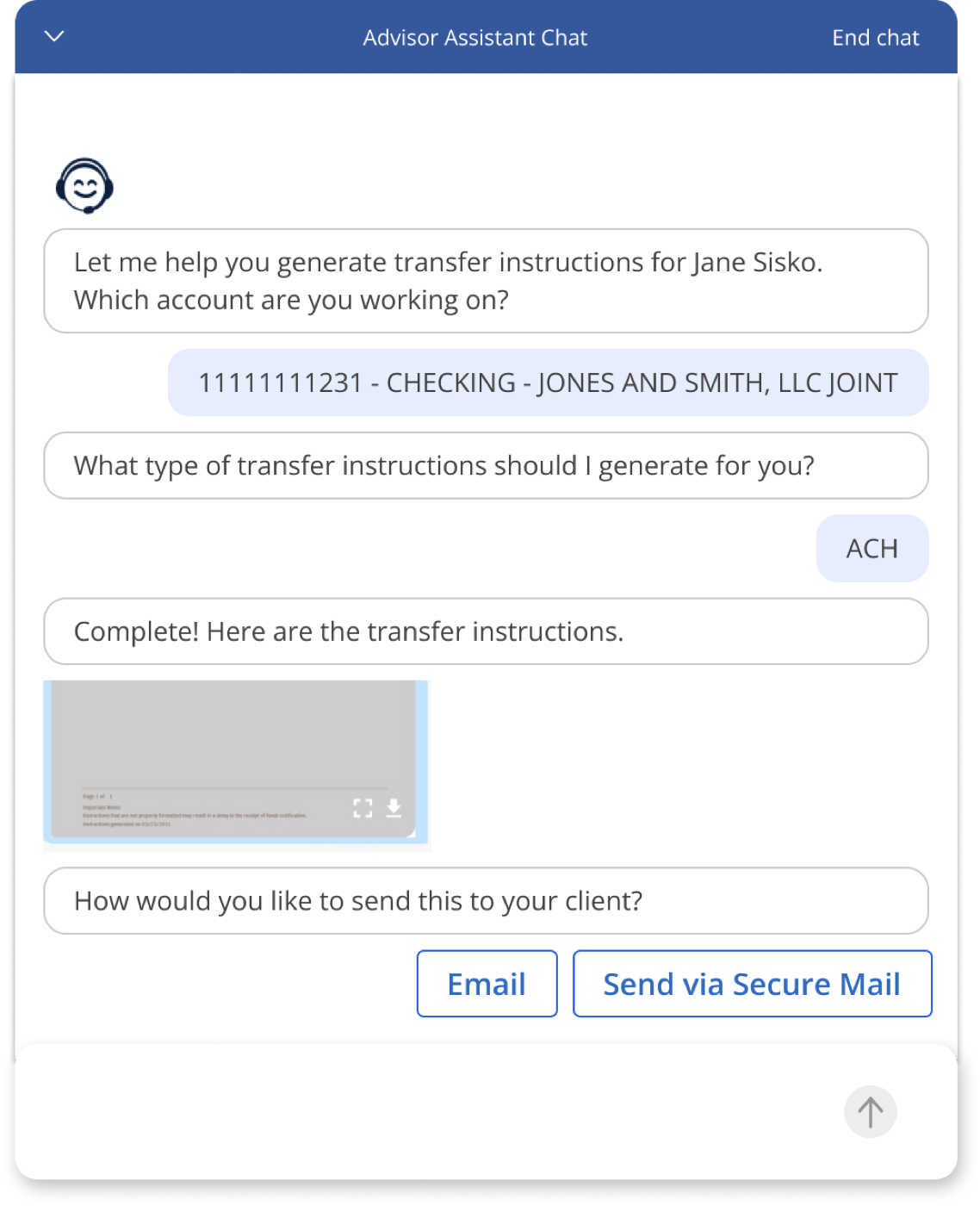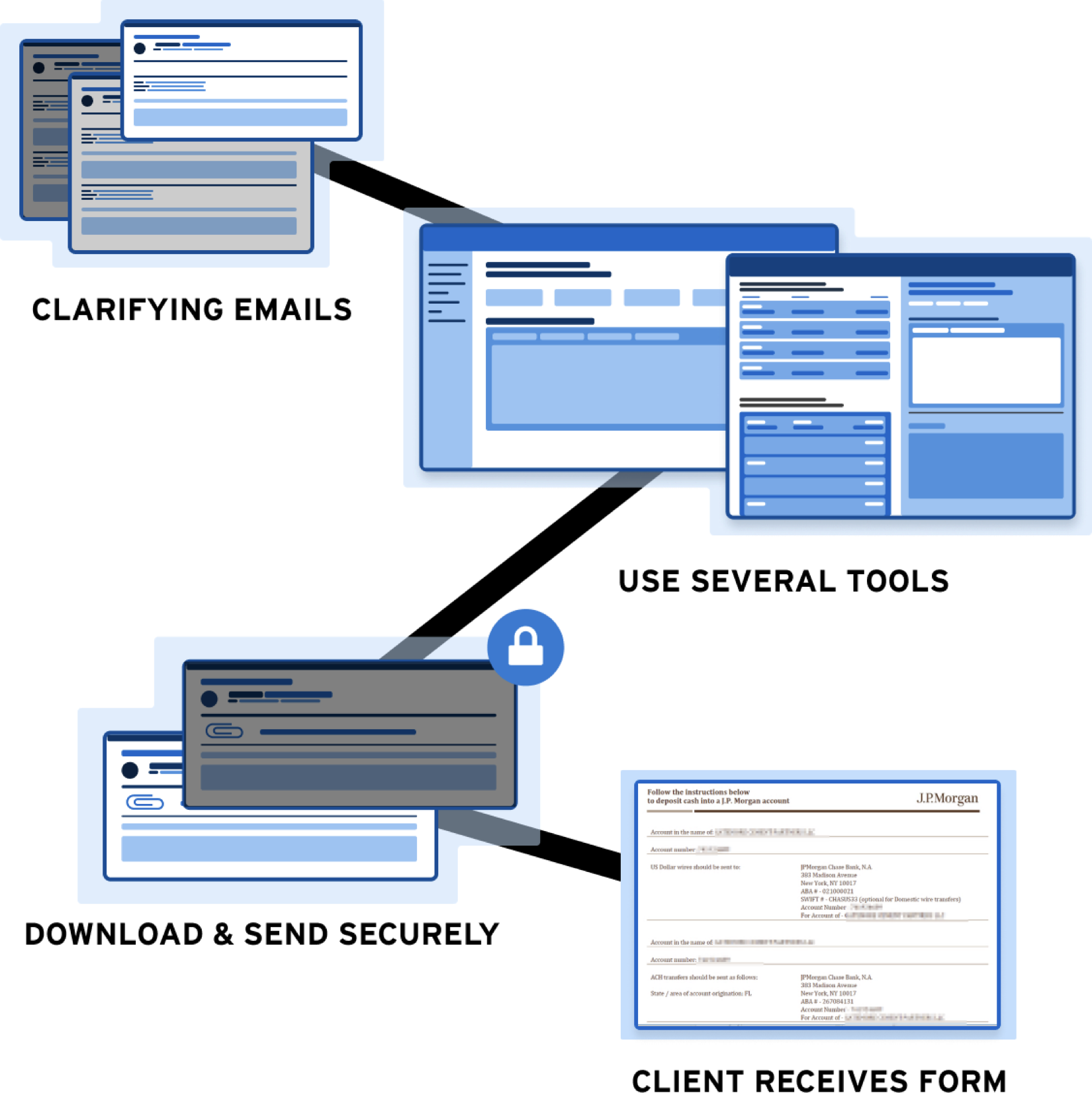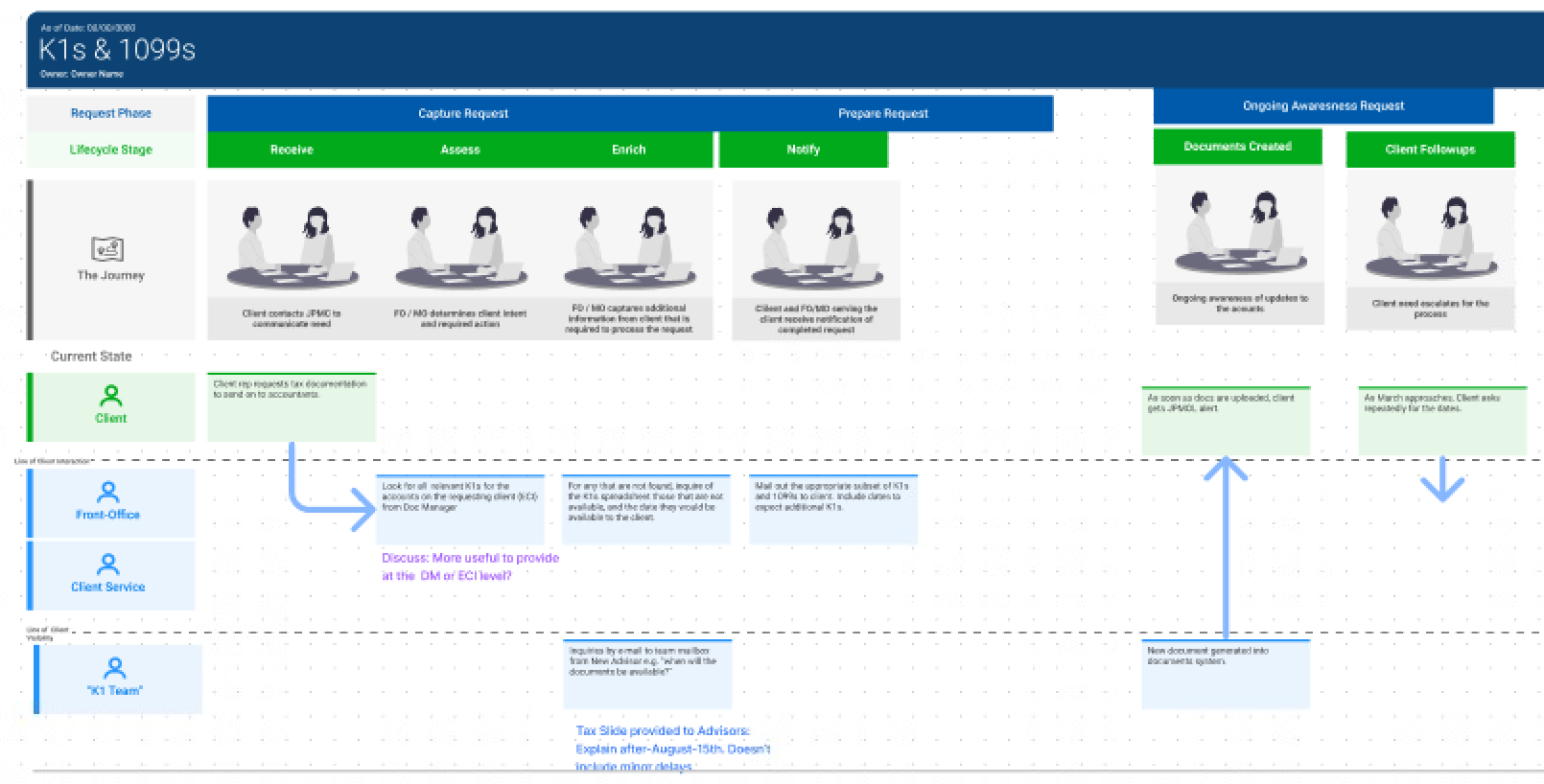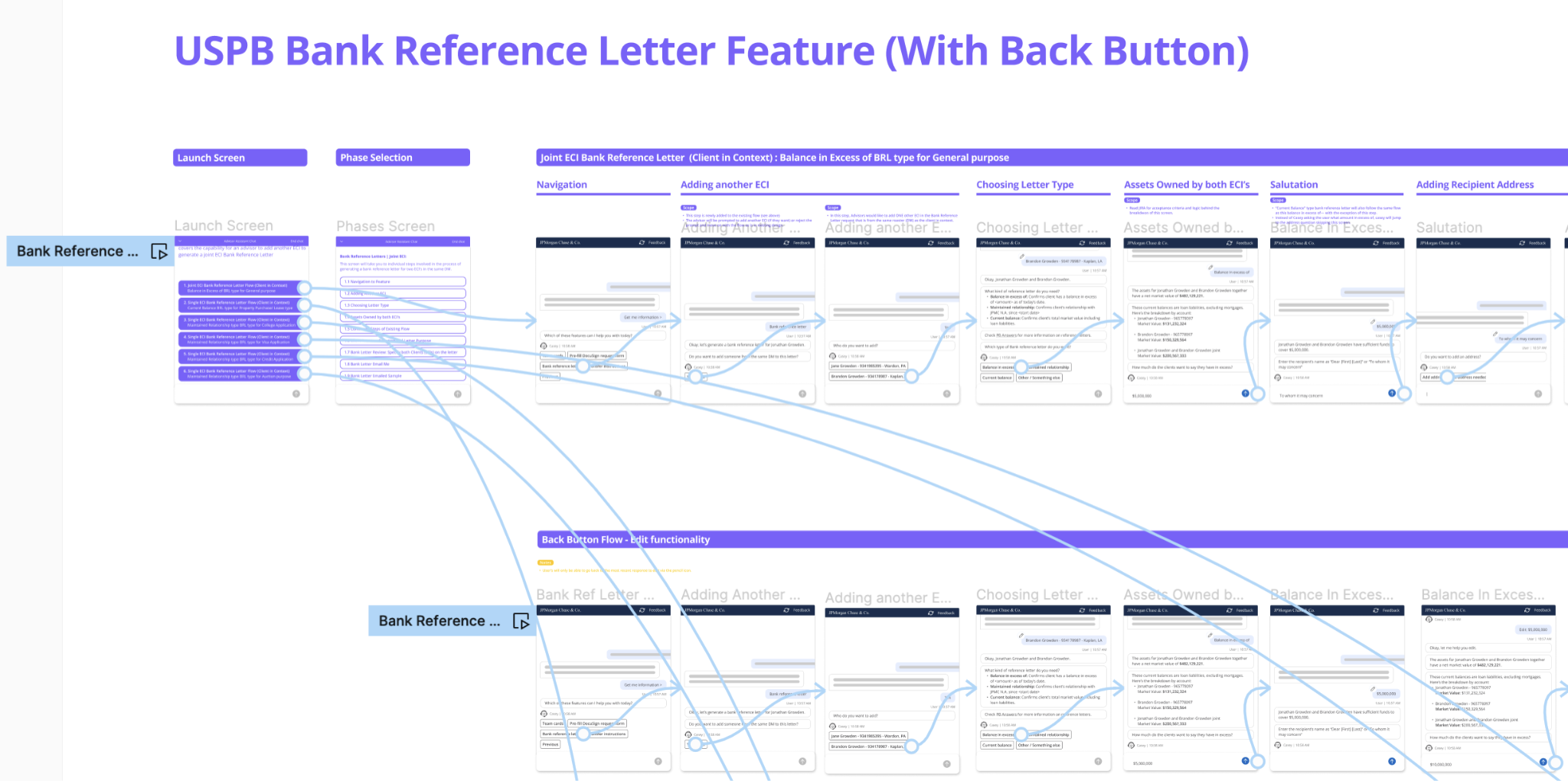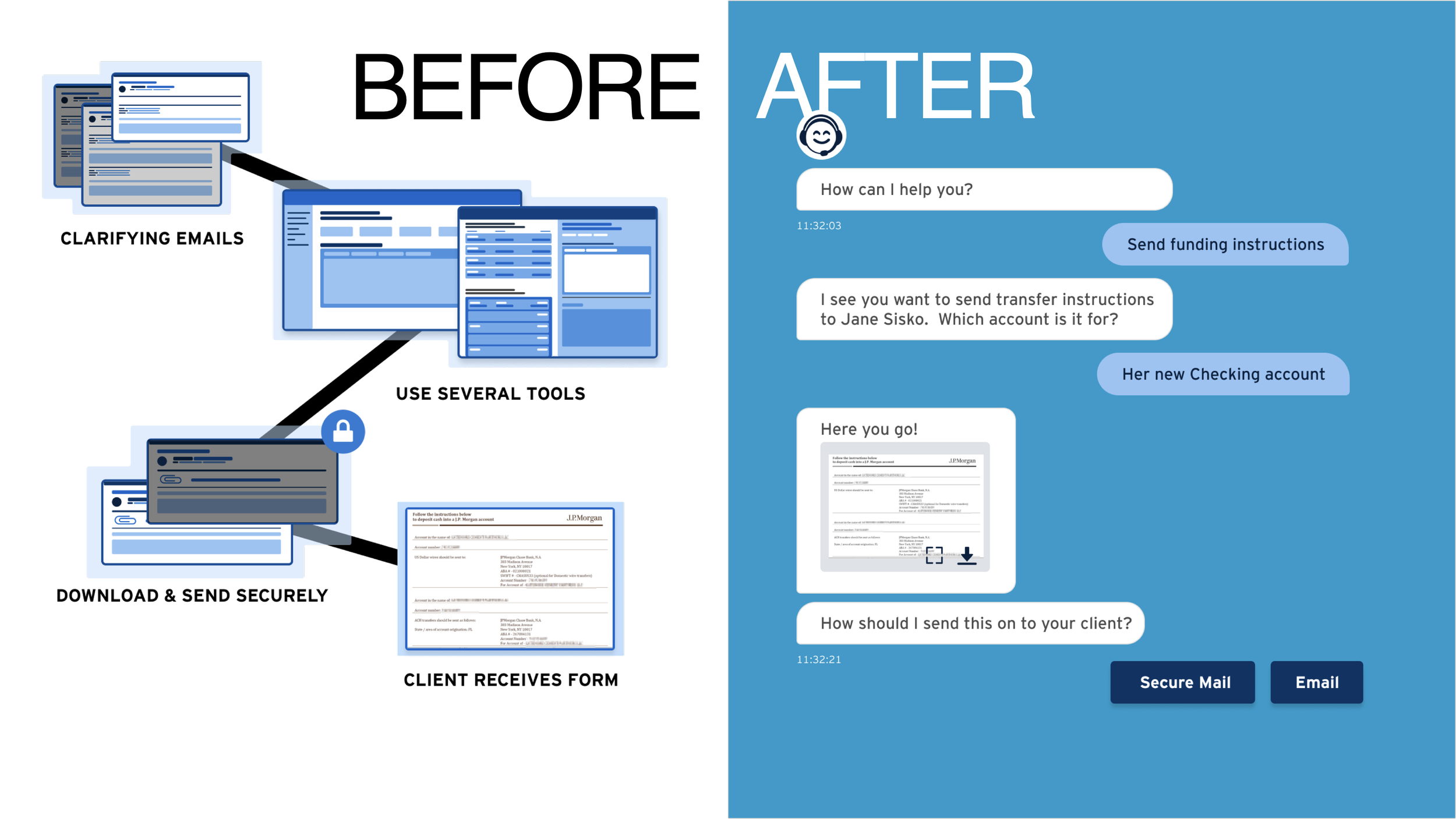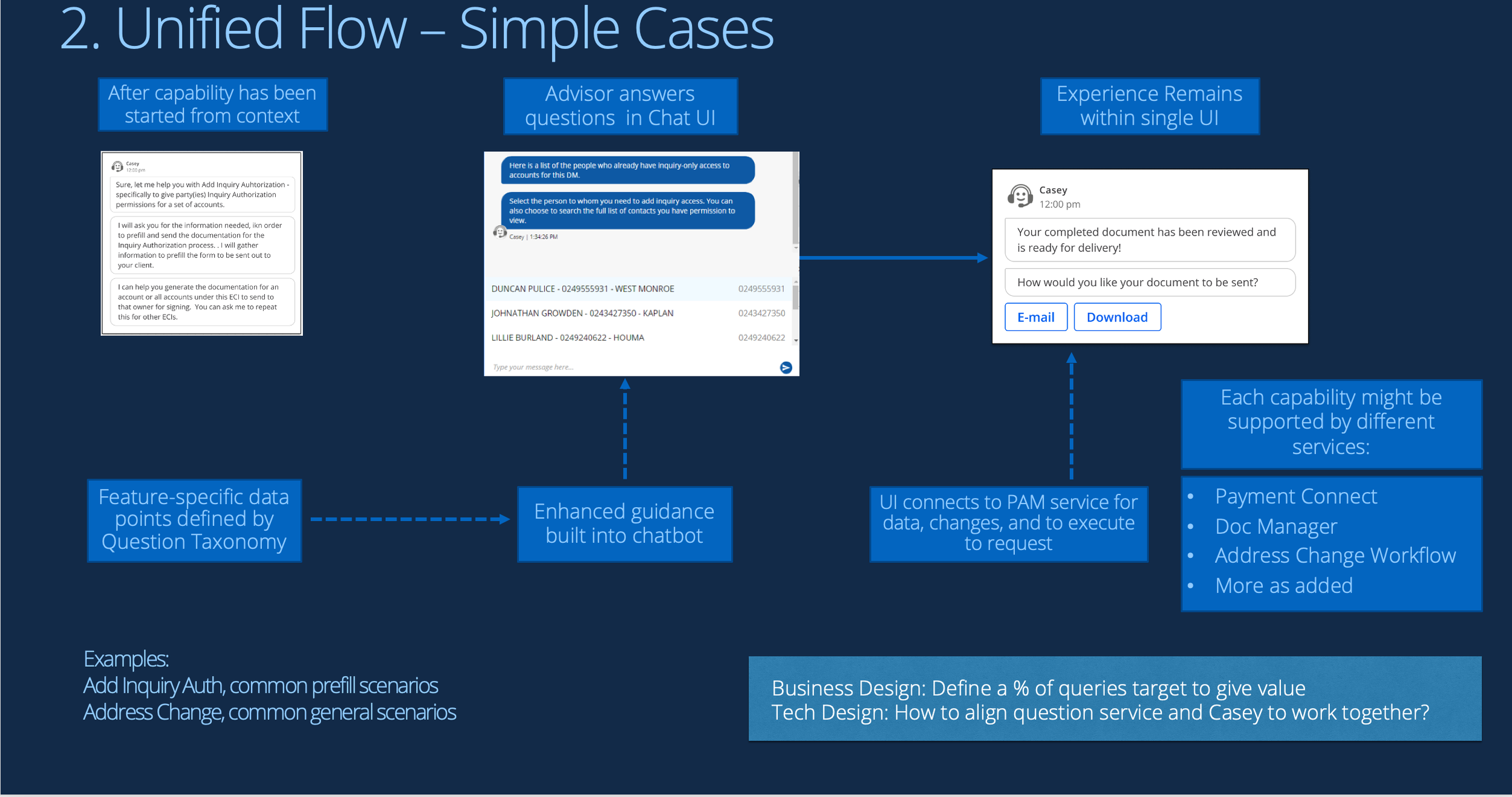A Reliable Front-Office Chatbot Assistant
Challenge: Customer Advisors and analysts at our client were overwhelmed with basic—but time-consuming—customer requests. The client asked for our UX team to design a chatbot experience in order to free these employees up for more high-value tasks.
Our Approach: My design team ran workshops and conducted user research to help envision the effective chatbot experience. In our framework, Design principles governed the “conversational design” approach with advisors and analysts, while Product principles prioritized the chatbot’s feature development and positioned the chatbot within the client’s broader product ecosystem.
My role: I led the design process and delivery. In the pilot phase, I did all aspects of design: conversation design, design strategy, service design, and initial user research. After the pilot we had many features and regions on the roadmap - I grew the UX team: adding a user researcher, a conversational + UI designer, and training up an international conversational designer, and I moved into a design management role.
Challenges
The private bank's advisors and analysts spent a lot of time on basic tasks like generating reference letters, finding financial product fact sheets, and managing account service requests. These tasks often took up to three days to complete and required multiple tools and communications. Additionally, there was no common starting point for advisors to request help, leading to inefficiency and lack of transparency.
Chatbot Design Strategy
Setting the Focus
I ran discovery workshops with the client’s product and technology team, we determined it would be most impactful to focus on servicing bottlenecks that kept advisors from spending time with their clients. Those roadblocks were almost always handled by the advisors’ supporting analysts, who became our primary end-users.
Broken Processes
The private bank's advisors and analysts spent a lot of time on basic tasks like generating reference letters, finding financial product fact sheets, and managing account-service requests. These tasks often took up to three days to complete and required multiple tools and communications. Additionally, there was no common starting point for advisors to request help, leading to inefficiency and lack of transparency.
Feature Design
Develop a Shared Understanding
Most support capabiltiies involved new support teams, tools, and stakeholders. Each time I ran the user research with advisors and their direct teams to map the work done behind the scenes.
Then I facilitated service design workshops with the supporting teams, to align the organizational business value and refine the user value for the capabilities. We worked supporting department to incorporate their existing process into the advisor experience, creating journey maps through front-office and back-office interactions.
Figma conversation flow design excerpt
Conversational Flow
Once the process understanding was aligned, we worked alongside the product team and key stakeholders in the supporting department, to designing user interactions in chat, and orchestrating what the chatbot handoffs must do behind the scenes with back-office processes, employees, and digital automation tools.
Insight: Conversational Design for Employee Tasks
Base principles: The flows were created to meet user needs, with a UX approach leveraging best interaction principles for conversational design: responsiveness, task-appropriate language and intelligently designed assistance.
Data-gathering: Each conversational flow typically emerged as a small series of friendly data-gathering questions that the chatbot posed to the advisor—intelligently using the advisor’s current context to simplify the question and answers needed in real-time.
Behind the scenes: Each feature invoked different processes and firm capabilities. I worked with users and process experts across each feature journey to create a conversational design.
Sample emergent patterns: Establish a support case
Emergent Patterns
Reusable conversation patterns emerged through our feature iteration - we developed flexible patterns to allow for analysts to be prompted through the data collection, but that would smartly incorporate clues provided early in the chat by users expert in a given process. We also learned that onlysome users were expert.
Over time, we used the chatbot platform’s Machine Learning-based AI capabilities. Capturing users’ responses over time improved the language model, and gave my design team insights as to how users expect to find different capabilities. This feedback informed our design of conversational elements that could respond to informal phrasings that advisors might type.
Measuring Success
Our Chatbot named “Employee of the Year!”
Within four months of launch, 56% of client advisors and 65% of bank analysts had adopted the tool. The most popular feature was generating client transfer instructions: 14,400 passed through the chatbot within the first 3 months alone.
In its pilot year, the chatbot was recognized as “Employee of the Year” at the town hall, and this Assistant was a finalist in the 2023 Banking Tech Project Awards.
Within a year, the client rolled out the chatbot to the international markets.
Project Learnings
This effort taught us that good design for a simple-seeming chatbot still requires the same kind of deep team connections with supporting processes and working closely with the product and user owners of those.
Our Service Design-informed approach resulted in contextual, trustable, and process-optimized interactions with advisors. That approach slashed task-management turnaround time and eliminated unnecessary touchpoints, while improving data quality throughout each process.
Additionally, the learnings from the design process provided leadership with opportunities to improve the efficiency in how many support processes were conducted, from learning how teams hand off work and collaborate across departments.

